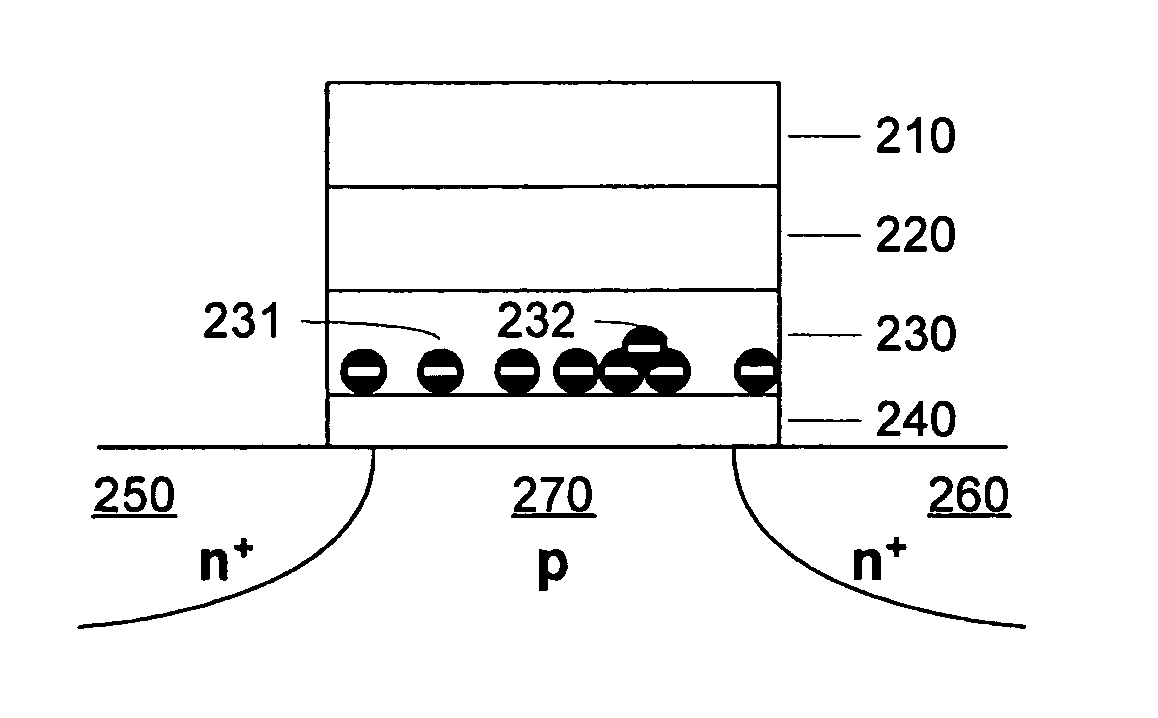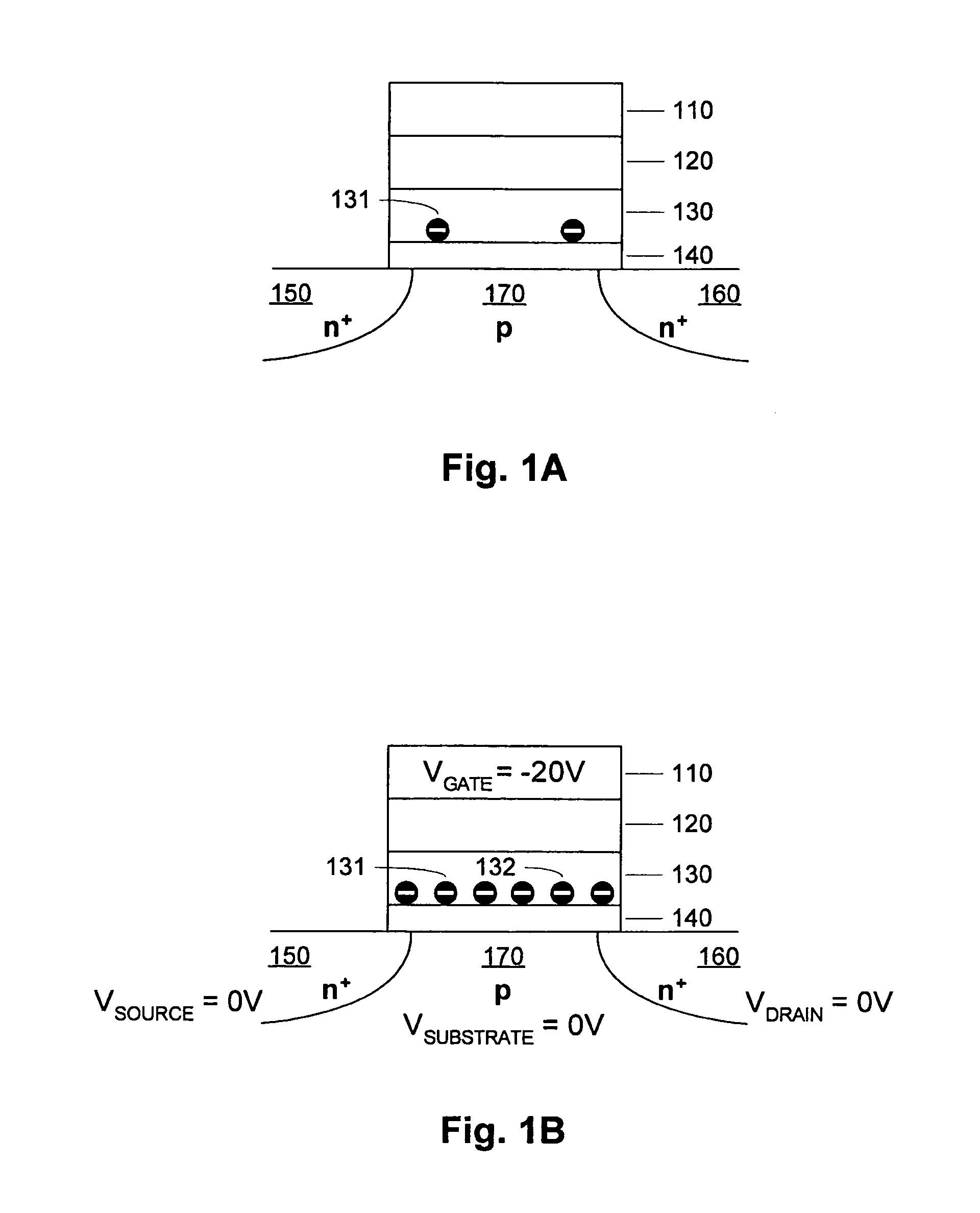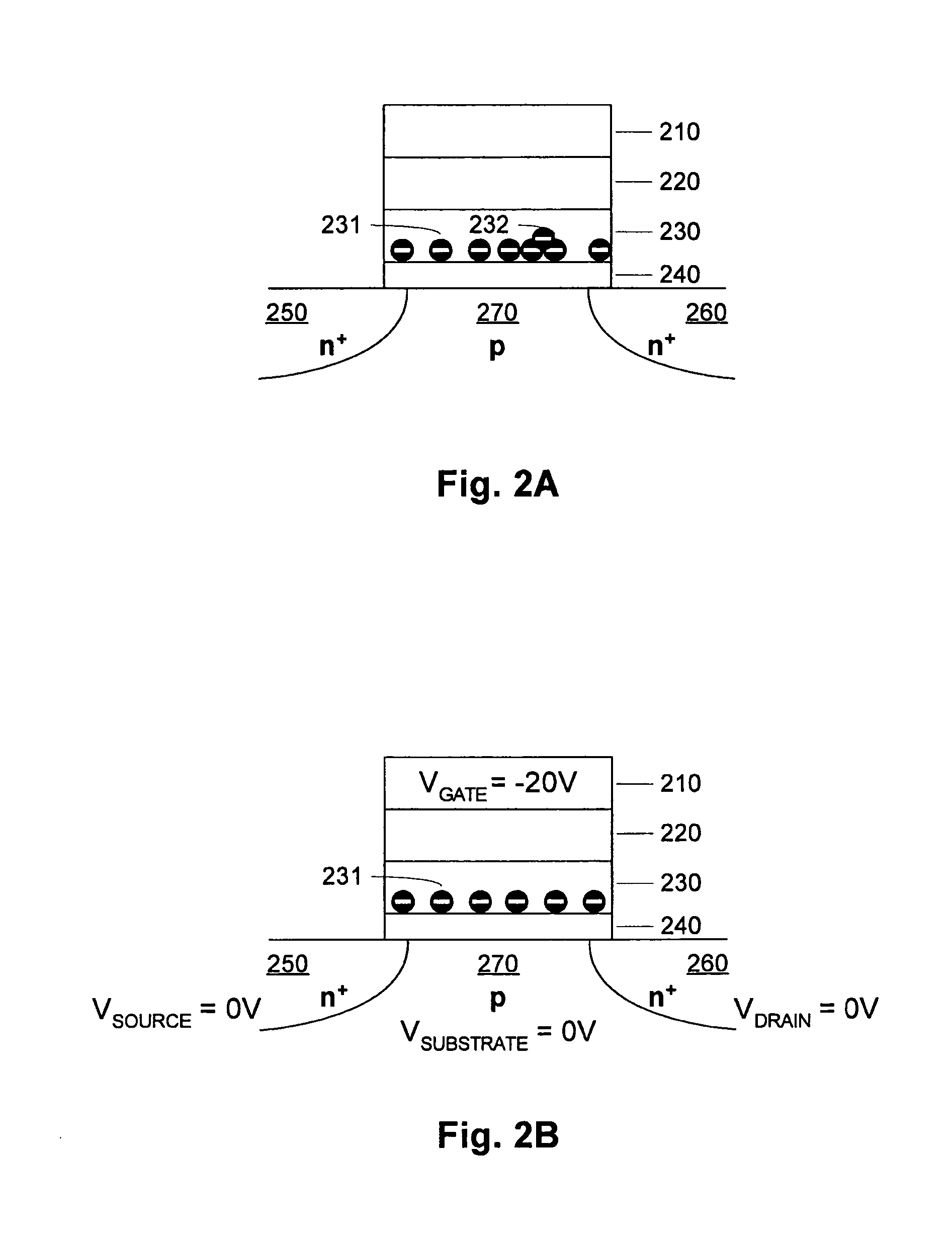Operation scheme with charge balancing for charge trapping non-volatile memory
a non-volatile memory and charge balancing technology, applied in the field of electricly programmable and erasable non-volatile memory, can solve the problems of poor charge retention, and large vt distribution of erase state, and achieve the effect of improving endurance and reliability
- Summary
- Abstract
- Description
- Claims
- Application Information
AI Technical Summary
Benefits of technology
Problems solved by technology
Method used
Image
Examples
Embodiment Construction
[0069]FIG. 1A is a simplified diagram of a charge trapping memory cell. The substrate includes n+ doped regions 150 and 160, and a p-doped region 170 between the n+ doped regions 150 and 160. The remainder of the memory cell includes a bottom dielectric structure 140 on the substrate, a charge trapping structure 130 on the bottom dielectric structure 140 (bottom oxide), a top dielectric structure 120 (top oxide) on the charge trapping structure 130, and a gate 110 on the oxide structure 120. Representative top dielectrics include silicon dioxide and silicon oxynitride having a thickness of about 5 to 10 nanometers, or other similar high dielectric constant materials including for example Al2O3. Representative bottom dielectrics include silicon dioxide and silicon oxynitride having a thickness of about 3 to 10 nanometers, or other similar high dielectric constant materials. Representative charge trapping structures include silicon nitride having a thickness of about 3 to 9 nanometers...
PUM
 Login to View More
Login to View More Abstract
Description
Claims
Application Information
 Login to View More
Login to View More - R&D
- Intellectual Property
- Life Sciences
- Materials
- Tech Scout
- Unparalleled Data Quality
- Higher Quality Content
- 60% Fewer Hallucinations
Browse by: Latest US Patents, China's latest patents, Technical Efficacy Thesaurus, Application Domain, Technology Topic, Popular Technical Reports.
© 2025 PatSnap. All rights reserved.Legal|Privacy policy|Modern Slavery Act Transparency Statement|Sitemap|About US| Contact US: help@patsnap.com



